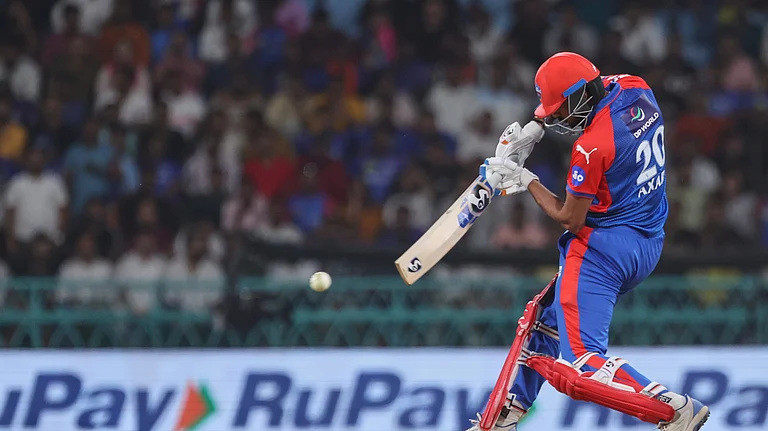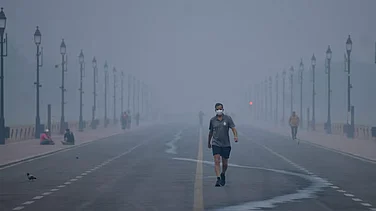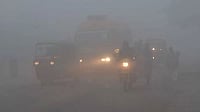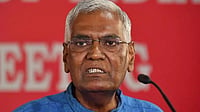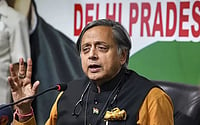Into the new millennium and the worst-ever drought in the past 100 years. The well-chronicled modernity of India notwithstanding, the country today faces the ravages of extreme water shortage which has spread like an epidemic through fives states-Rajasthan, Gujarat, Andhra Pradesh, Orissa and Maharashtra. In Madhya Pradesh, Jammu and Kashmir, Himachal, West Bengal, Tamil Nadu, there are districts without water as are some states in the countrys northeast. With water reservoirs getting shallower as the summer mounts, the absence of monsoon this year could push Indias agriculture down into a precipice.
In 1660, an administrative measure taken by Maharaja Raj Singh of Mewar endeared him to his subjects. On his insistence, the huge Rajasamand Lake came into existence. The king had wanted a lake that would help his kingdom tide over scarcity of water and avoid drought and famine. Not only did the lake protect his kingdom from natures capricious ways then, but was a source of succour later for at least three or four districts of Rajasthan right up to modern times.
In 2000, for the first time in living memory, the lake has completely dried up. And its the same story everywhere in rural Rajasthan. Almost all rivers, wells, traditional haudas for storing water, streams and rivulets have gone dry. The irrigation systems, or whatever little remains of them, have become irrelevant. People in small towns and villages now have to make do with no more than a bowl of water a day and cattle, by the dozens, are dying, for want of water and fodder. Clearly, with the summers just beginning, Rajasthan faces probably the worst drought over the last century, with 28 out of its 32 districts ravaged by an acute scarcity of water.
AND there is little that man can do in the face of such lethal and whimsical coquetry of nature, particularly when there have been no programmes aimed at harnessing and generating natural water. Far from following a plan, the governments reaction has been typically kneejerk. Says Rajasthan chief minister Ashok Gehlot: "Weve asked for sinking of more tubewells." But its precisely this populistic measure, encouraged by politicians in large parts of the country, that in retrospect has become the earths bane.
The Shivganj panchayat in Sirohi district, for instance, is just one of the hundreds of panchayats spread throughout the state. It has currently mobilised all its resources for a single achievement: organise water for its people and hold on to the rapidly depleting fodder for the livestock. Sarpanch Dalip Singh Madani claims five tubewells have already been bored and he is looking for at least five more to keep afloat.
The damage caused by this indiscriminate sinking of tubewells has been two-fold. In Rajasthan, all traditional methods of water storage, integral to local culture, have been decimated. In the interiors of the state, water-harvesting systems like nadi and khadin, which for years had been used to efficiently augment ground water, have given way to tubewells. An important, and related, fallout has been the steadily declining water levels in the state.
According to an estimate drawn up by the Jodhpur-based Central Arid Zone Research Institute (cazri), the water table has been steadily declining at the rate of 80 to 100 centimetres per year. Says S. Kathju, head of the soil-water-plant relations at cazri: "The situation is indeed grim. Rainwater harvesting and other forms of water augmentation take a lot of time and planning. No short-term measures can be good enough." In some parts of the state, digging for water has not yielded any fruitful result. In Busi village of Pali district, when an 80-foot deep hole was bored in three days to sink a tubewell, it was discovered that there was no water. Reports of village panchayats sinking deep wells only to find brackish water not fit for human consumption are pouring in from all across the state. Experts say that the large-scale environmental degradation has badly hit the catchment areas of rivers all over Rajasthan.
That water is becoming an increasingly acute commodity in various parts of the country is now becoming obvious. Apart from Gujarat, where the prosperous Saurashtra region is undergoing a calamitous drought, the situation in Maharashtra, Andhra Pradesh, Orissa and some other states is just a wee bit below the danger mark. It is not for nothing that Maharashtras minister for rural development and water supply R.R. Patil threatened neighbouring states for demanding more water from what he describes as his home river. While the situation there is not as bad as in Rajasthan and Gujarat, the signs are all there. Nearly 12,000 villages in the state are facing acute water shortage. The state government has demanded a central assistance of over Rs 100 crore to face the impending drought.
In Andhra Pradesh, 18 out of a total of 23 districts have been declared drought-hit by the state government, affecting nearly 18,000 villages. Andhras problem is the same-indiscriminate boring of tubewells has completely depleted the water level.
Analysts lament that state governments dont utilise satellite mapping, an accurate imperative for predicting droughts and famines. In Andhra, the district administrators have not followed guidelines set by the National Remote Sensing Agency (NRSA). The state government had taken the help of remote sensing for mapping water zones. Maps resulting from this exercise had indicated areas where tubewells were a strict no-no. But in the absence of an alternative all the guidelines were conveniently passed over. Similarly in Rajasthan and Gujarat, there has been no mapping of areas identified as water-scarce.
But the most ironical is the situation in Orissa, which a few months ago was battling water and now cannot find it anywhere. In the Erasama block, which was the worst hit by the cyclone, sweet water is not available at a depth of 1,500 feet. Chief minister Navin Patnaik has demanded that special trains be run to carry water into the remote districts of the state. That apart, Patnaik says he needs more central assistance for "sinking more tubewells and organising tankers for water supply."
Ditto in Madhya Pradesh. The whole Nimar and Malwa region comprising Dewas, Dhar, Jhabua, Mandsaur and Ratlam districts are under a dry spell. Jhabua, which borders Gujarat and has similar climatic conditions, is the worst hit. Says Dhar deputy collector Rajesh Rajora: "Rich farmers or patidars have bored deep into their plots of land and use them to grow, at least, three crops a year. This has led to lowering of water table." The same has been the case in Rajasthan. Rich farmers, aware of the political clout they enjoy, have dug up as deep as they can to get the maximum number of crops possible in a year. This has led to overutilisation of soil and water. Governments, faced with the effect of past sins, are offering more of the same.
Just one drought, it seems, is not enough. Several in a row are required to impress upon the rulers the magnitude of the water problem. Most politicians privately agree that an exhaustive water policy is the need of the hour. However, since its not of much significance electorally, it ceases to be an issue once the summers come to an end.








